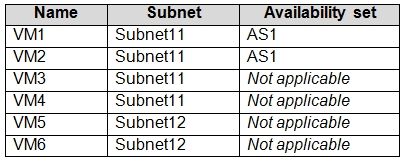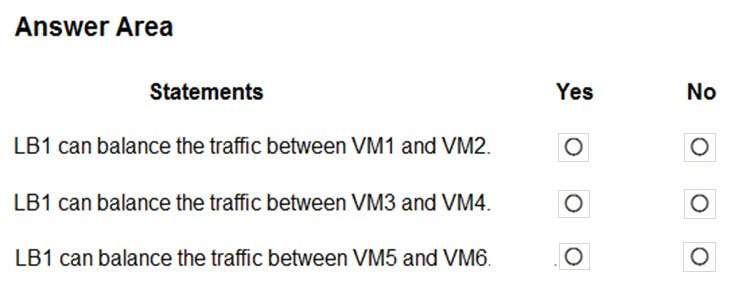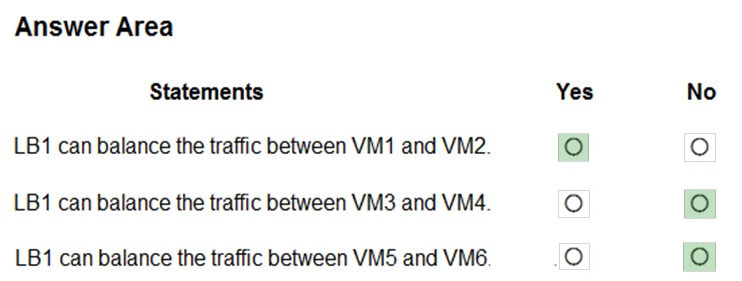

HOTSPOT -
You have an Azure subscription named Subscription1 that contains the virtual networks in the following table.
Subscription1 contains the virtual machines in the following table.
In Subscription1, you create a load balancer that has the following configurations:
✑ Name: LB1
✑ SKU: Basic
✑ Type: Internal
✑ Subnet: Subnet12
✑ Virtual network: VNET1
For each of the following statements, select Yes if the statement is true. Otherwise, select No.
NOTE: Each correct selection is worth one point.
Hot Area:

mlantonis
Highly Voted 4 years, 1 month agoMshahid
1 year, 10 months agonkhan19
2 years, 11 months agoAghora
Highly Voted 4 years, 6 months agoSteve1983
4 years ago23169fd
Most Recent 1 year, 1 month agoSkyZeroZx
1 year, 5 months agoExams_Prep_2021
1 year, 6 months agoAhkhan
1 year, 8 months agoYaruk
1 year, 10 months agoYaruk
1 year, 10 months agomarioZuo
1 year, 11 months agoalsmk2
10 months, 3 weeks agoBShelat
2 years, 6 months agoMuffay
2 years, 6 months agoZakySama
2 years, 8 months agoklexams
2 years, 8 months agoqwerty100
2 years, 8 months agoEmnCours
2 years, 10 months agoLazylinux
3 years agoLazylinux
3 years agoobservador081
3 years, 1 month agoGenjamBhai
3 years ago